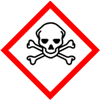 |
King of Chemicals Manufacturers |
Specifications, Properties, Uses, SDS of Selenium Sulfide or Selenium Sulphide USP BP Ph Eur Grade Manufacturer Supplier Exporter Wholesale & Small Packs, CAS Number 7488-56-4. |
|
| King of Chemicals has several associated companies having accreditations like cGMP, GLP - FDA Approved Good Manufacturing Practice and Good Laboratory Practice of WHO standard, ISO-9001, ISO-14001, ISO/IEC 17025, ISO ISO-45000, HACCP, FSSC 220000, FSSAI, "REACH" Registered, Kosher & Halal Certified. e-CTD and DMF support can be made available if needed. We offer USP NF BP Ph Eur EP IP JP Analytical Reagent FCC Food Grade Chemicals & Nutraceuticals. | |
        |
|
Muby Chem Pvt. Ltd. is a several decades old group of companies, engaged in manufacturing, supplying, distributing, wholesale supplies of Selenium Sulfide or Selenium Sulphide USP BP Ph Eur Grade for actual users, including retail or small pack supplies for research and development work.
We supply fine and speciality chemicals, pharmaceutical excipients, mineral fortifiers in chemically pure, analytical reagent grade, IP BP USP Ph Eur EP JP and other pharmaceutical grade monograph including FCC Food grade chemicals and Nutraceuticals at best prices. We and/or our associated units have all the facilities to supply as per cGMP standard observing good manufacturing practice and good laboratory practice. We can assure low microbial count and also offer a test certificate for the same. We maintain warehouses across USA, India, and UAE. Our group exports to USA, Canada, Mexico, Argentina, Brazil, Chile, Korea, Malaysia, Thailand, Indonesia, Europe, and several other parts of the world. We supply in wholesale container loads to small pack of few grams. Solid products may be specified for it size and shape as desired by the buyer.

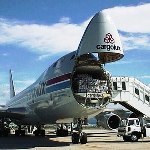
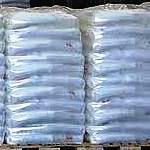

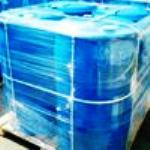
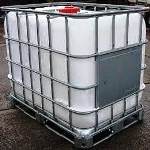
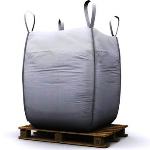
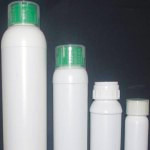

Selenium Sulfide or Selenium Sulphide CAS Number 7488-56-4
For Properties Specifications Uses of Selenium Sulfide or Selenium Sulphide Click Properties, Specifications, Uses, Price, Process of Selenium Sulfide or Selenium Sulphide Manufacturer.
For For SDS MSDS Sheet of Selenium Sulfide or Selenium Sulphide Click SDS Safety Data Sheet MSDS Sheet of Selenium Sulfide or Selenium Sulphide Manufacturer.
The Properties, Specifications, Monograph and Uses of Selenium Sulfide or Selenium Sulphide:
Selenium Sulfide BP Ph Eur Grade Specifications:
Selenium Disulphide
SeS2 --- 143.1 CAS 7488-56-4
Action and use: Used in treatment of dandruff and seborrhoeic dermatitis of the scalp.
DEFINITION
Content: 52.0 per cent to 55.5 per cent of Se.
CHARACTERS
Appearance: Bright orange or reddish-brown powder.
Solubility: Practically insoluble in water.
IDENTIFICATION
A. Gently boil about 50 mg with 5 mL of nitric acid for 30 min. Dilute to 50 mL with water and filter. To 5 mL of the filtrate add 10 mL of water and 5 g of urea. Heat to boiling, cool and add 1.5 mL of potassium iodide solution. A yellow or orange colour is produced which darkens rapidly on standing. This solution is used in identification test B.
B. Allow the coloured solution obtained under identification A to stand for 10 min and filter through kieselguhr for chromatography. 5 mL of the filtrate gives a reaction of sulfates.
Soluble selenium compounds: Maximum 5 ppm, calculated as Se.
Selenium Sulfide USP Grade Specifications
SeS2 143.09 -- CAS 7488-56-4
Selenium Sulfide contains not less than 52.0 percent and not more than 55.5 percent of selenium (Se).
Identification:
A: Filter 20 mL of the solution of Selenium Sulfide prepared as directed in the Assay, and to 10 mL of the filtrate add 5 mL of water and 5 g of urea. Heat to boiling, cool, and add 2 mL of potassium iodide solution (1 in 10): a yellowish orange to orange color is produced, and it darkens rapidly (presence of selenium).
B: Allow the solution obtained in Identification test A to stand for 10 minutes, filter, and to the filtrate add 10 mL of barium chloride: the solution becomes turbid (presence of sulfur).
Tests:
Residue on ignition: not more than 0.2%.
Soluble selenium compounds:
Test solution: Mix 10.0 g of Selenium Sulfide with 100.0 mL of water in a 250-mL flask, allow to stand for 1 hour, with frequent agitation, and filter. To 10.0 mL of the filtrate add 2 mL of 2.5 M formic acid, dilute with water to 50 mL, mix, and adjust, if necessary, to a pH of 2.5 ± 0.5. Add 2 mL of freshly prepared 3,3-diaminobenzidine hydrochloride solution (1 in 200), mix, allow to stand for 45 minutes, and adjust with 6 N ammonium hydroxide to a pH of 6.5 ± 0.5. Transfer to a separator, add 10.0 mL of toluene, shake vigorously for 1 minute, allow the layers to separate, and discard the aqueous phase.
Standard solution: Using 10.0 mL of a solution of selenious acid containing 0.5 :g of selenium per mL, prepare a solution as directed under Test solution, beginning with “add 2 mL of 2.5 M formic acid.”
Procedure: Concomitantly determine the absorbances of the toluene layers of the Test solution and the Standard solution in 1-cm cells at 420 nm, with a suitable spectrophotometer, using a blank consisting of the same quantities of the same reagents treated in the same manner as the Test solution: the absorbance of the Test solution is not greater than that of the Standard solution (5 ppm).
Assay: Place about 100 mg of Selenium Sulfide, accurately weighed, in a suitable container, add 25 mL of fuming nitric acid, and digest over gentle heat until no further solution occurs. Cool, transfer the solution to a 250-mL volumetric flask containing 100 mL of water, cool again, dilute with water to volume, and mix. Pipet 50 mL of the solution into a suitable flask, add 25 mL of water and 10 g of urea, and heat to boiling. Cool, add 3 mL of starch, then add 10 mL of potassium iodide solution (1 in 10), and immediately titrate with 0.05 N sodium thiosulfate VS. Perform a blank determination, and make any necessary correction. Each mL of 0.05 N sodium thiosulfate is equivalent to 987.0 microgm of Se.
The MSDS-SDS Hazard Statement of Selenium Sulfide or Selenium Sulphide:
Selenium sulfide or Selenium sulphide SDS, Safety Data Sheet
MSDS Sheet, Material Safety Data Sheet 05-April-25
Section 1. Product Information
Product Name & Other Names: Selenium sulfide or Selenium sulphide or Selenium disulfide.
CAS No.: 7488-56-4
EINECS EC Number: 231-303-8
Relevant uses and uses advised against (if any): Industrial Manufacturing.
Section 2: Hazards Identification
GHS, Globally Harmonized System Classification in accordance with 29 CFR 1910
Classification according to Regulation (EC) No 1272/2008
Acute toxicity, Oral (Category 3), H301
Acute toxicity, Inhalation (Category 3), H331
Specific target organ toxicity - repeated exposure (Category 2), H373
Chronic aquatic toxicity (Category 1), H410
Labeling according to GHS & Regulation (EC) No 1272/2008
GHS Label Elements  Marine Pollutant |
GHS Label Elements |
GHS Label Elements |
Signal Words: Danger
Hazard statements:
H301 Toxic if swallowed.
H331 Toxic if inhaled.
H373 May cause damage to organs through prolonged or repeated exposure.
H410 Very toxic to aquatic life with long lasting effects.
Precautionary statements:
P260: Do not breathe dust/fume/gas/mist/vapors/spray.
P264: Wash --- thoroughly after handling.
P270: Do not eat, drink or smoke when using this product.
P271: Use only outdoors or in a well-ventilated area.
P280: Wear protective gloves/protective clothing/eye protection/face protection.
P314: Get medical advice/attention if you feel unwell.
P301+310: IF SWALLOWED: Immediately call a POISON CENTER or doctor/physician.
P304+340: IF INHALED: Remove victim to fresh air and keep at rest in a position comfortable for breathing.
Section 3: Composition and Information on Ingredients
Product Name & Other Names: Selenium sulfide or Selenium sulphide or Selenium disulfide.
CAS No.: 7488-56-4
EINECS EC Number: 231-303-8
Section 4. First Aid & Procedure
Always get medical attention after the first aid is over.
Ingestion: Induce vomiting immediately as directed by medical personnel. Never give anything by mouth to an unconscious person. Get medical attention.
Skin: Immediately flush skin with plenty of water for at least 15 minutes. Remove and wash contaminated clothing and shoes before reuse. Get medical attention if irritation develops.
Eyes: Immediately flush eyes with plenty of water for 15 minutes, occasionally lifting upper and lower eyelids. Hold eyelids apart during irrigation. Get medical attention.
Inhalation: Remove person to fresh air. If breathing is difficult, give oxygen. If not breathing administer artificial respiration. Get medical attention.
Section 5. Fire Fighting Measures
Flash Point: N/A
Extinguishing MediumWater spray, alcohol-resistant foam, dry chemical or carbon dioxide.
Special hazards arising from the substance or mixture: Sulfur oxides, Selenium/selenium oxides
Fire Fighting Instructions: Use suitable protective equipment for surrounding fire.
Section 6. Spills and Disposals
Personal precautions, protective equipment, and emergency procedures: Avoid breathing dust/fumes/gas/mist/vapors/spray. Use individual protective equipment (waterproof boots, suitable protective clothing, safety glasses, etc.).
Environmental precautions: Do not let the product enter drains, soil, or water sources.
Methods and materials used for containment Cleanup procedures and Storage: Do not inhale vapors, mist, or gas. Avoid dust formation. Contain spilled material. Cover with an inert, non-combustible absorbent material, (e.g. sand, earth, diatomaceous earth, vermiculite). Use a shovel to put the material into a convenient waste disposal container. Finish cleaning by spreading water on the contaminated surface and allow to evacuate as per law. Use clean non-sparking tools to collect material and place it into loosely covered plastic containers for later disposal.
Section 7. Handling and Storage
Precautions for safe handling: Apply according to good manufacturing and industrial hygiene practices. Ensure proper ventilation. In case of insufficient ventilation, wear suitable respiratory equipment. Wash thoroughly after handling. Do not drink, eat, or smoke while handling. Avoid contact with skin, eyes, and clothing. Minimize dust generation. Avoid breathing dust/fumes/gas/mist/vapors/spray. Keep container tightly closed. Avoid ingestion and inhalation. Use individual protective equipment (waterproof boots, suitable protective clothing, safety glasses, etc.).
Conditions for safe storage, including any incompatibilities: Store in cool, dry, and ventilated area away from heat sources and protected from sunlight in tightly closed original container. Keep air contact to a minimum. Store protected from heat, sparks and ignition sources and incompatible materials. Avoid inhalation of dust/mist/vapor. Do not store with incompatible materials like strong oxidizing agents, strong reducing agents, strong acids, ammonia, organic materials, powdered metals.
Section 8. Exposure Controls & Personal Protection
Exposure Limits for Selenium sulfide:
OSHA PEL: 0.2 mg/COM Ceiling for Selenium compounds (as Se).
ACGIH TLV: 0.2 mg/CBM (TWA) Selenium compounds (as Se).
Engineering Controls: Use adequate exhaust ventilation to keep airborne concentrations low.
Personal Protective Equipment
Eyes: Wear appropriate protective eyeglasses or chemical safety goggles.
Skin: Wear appropriate protective gloves.
Respiratory System: Approved or certified respirators.
Other Protective Equipments: Overalls or similar protective apparel, clean up facilities.
Don't eat, drink or smoke in work areas.
Section 9. Physical & Chemical Data
Appearance: Reddish Solid.
Odor: Slight
Odor threshold: No information found.
pH Value: 2-6
Relative density: around 2.44
Melting Point: 121C
Initial boiling point and boiling range: No information found.
Flash point: No information found.
Auto-ignition temperature: No information found.
Decomposition temperature: No information found.
Upper/lower flammability or explosive limits: No information found.
Vapor pressure: No information found.
Vapor density: No information found.
Evaporation rate: No information found.
Flammability (solid, gas): No information found.
Partition coefficient: n-octanol/water: No information found.
Solubility(ies): No information found.
Viscosity: No information found.
Section 10. Stability and Reactivity
Chemical Stability: Stable under normal temperatures and pressures.
Incompatibility (Materials to Avoid): Strong reducing agents, Strong acids, Ammonia, Organic materials, Powdered metals.
Conditions to Avoid: Incompatible materials, exposure to moist air or water, excessive heat.
Hazardous Decomposition Products: Sulfur oxides, oxides of Selenium.
Hazardous Polymerization: Will not occur.
Section 11. Toxicological Information
Toxicity to Animals: LD50 Oral - Rat - 138 mg/kg.
Carcinogenicity: Not listed as a suspected/confirmed carcinogen by ACGIH, IARC, NTP, OSHA.
Teratogenic Effects: No information found.
Mutagenic Effects: No information found.
Developmental Toxicity: No information found.
Reproductive Effects: No information found.
Specific target organ toxicity: May cause damage to organs through prolonged or repeated exposure.
Section 12. Ecological Information
Ecotoxicity: Very toxic to aquatic organisms, may cause long-term adverse effects in the aquatic environment.
Results of PBT and vPvB Assessment: This substance/mixture contains no components considered to be either persistent, bioaccumulative and toxic (PBT), or very persistent and very bioaccumulative (vPvB) at levels of 0.1% or higher.
Persistence and Degradability: Soluble in water. Persistence is unlikely.
Section 13. Disposal Suggestions
Dispose of in accordance with all applicable local, state, and federal regulations at an approved waste disposal facility. Follow all the pollution control laws.
Section 14. Transport and Label Information
Land Transport DOT USA, TDG Canada & ADR/RID Europe:
UN-No UN2657
Proper Shipping Name SELENIUM DISULPHIDE
Hazard Class 6.1
Packing Group II
Sea Transport IMDG/IMO:
UN-No UN2657
Proper Shipping Name SELENIUM DISULPHIDE
Hazard Class 6.1
Packing Group II
Air Transport IATA/ICAO:
UN-No UN2657
Proper Shipping Name SELENIUM DISULPHIDE
Hazard Class 6.1
Packing Group II
Section 15. Regulatory Information
USA:
SARA 311/312 Hazards: Chronic health hazard. Aquatic hazard.
California Prop. 65 Components: Not listed.
Section 16. Other Information
DISCLAIMER: The information and recommendations set forth herein are presented in good faith and believed correct as of the date hereof. It is compiled from various sources, and it is not necessarily all inclusive nor fully adequate in every circumstance. In addition, these suggestions should not be confused with nor followed in violation of applicable laws, regulations, rules, or insurance requirements applicable. This SDS MSDS sheet is intended only as a guide to the appropriate precautionary handling of the material by a professionally trained person using this product. Individuals receiving the information must exercise their independent judgment in determining its appropriateness for a particular purpose. This shall not constitute a guarantee for any specific product features and shall not establish a legally valid contractual relationship. In no case shall our company be liable to loss or damages by the product user.

Selenium Sulfide or Selenium Sulphide Manufacturers, Suppliers, Exporters, Wholesalers:
King of Chemicals manufacturers

Plot No. 2900/46&47 + 2900/163to167, GIDC, Ankleshwar, Dist. Bharuch, India
India, USA, UAE
TEL: (Office) 91-22-23774610, 91-22-23723564
e-mail: info@kingofchemicals.com
Copyright and Usual Disclaimer is Applicable --- April 5, 2025
If I give you “My Word” Nobody can undo it.
If I sign an “Agreement” my Lawyer will undo it
Our products are for industrial and laboratory use only. The user must test the material before use. We are not dispensing chemists or druggist and do not offer over the counter type (OTC) products for medical use by individuals.
We and our associates manufacture pure chemicals surpassing Monograph Specifications of Analytical Reagent Standards, British & European Pharmacopoeia BP Ph Eur EP Standard, US Pharmacopoeia USP NF Standard, Indian Pharmacopoeia IP Standard, Japan Pharmacopoeia JP Standard, FCC Food Grade Standard. |
|

